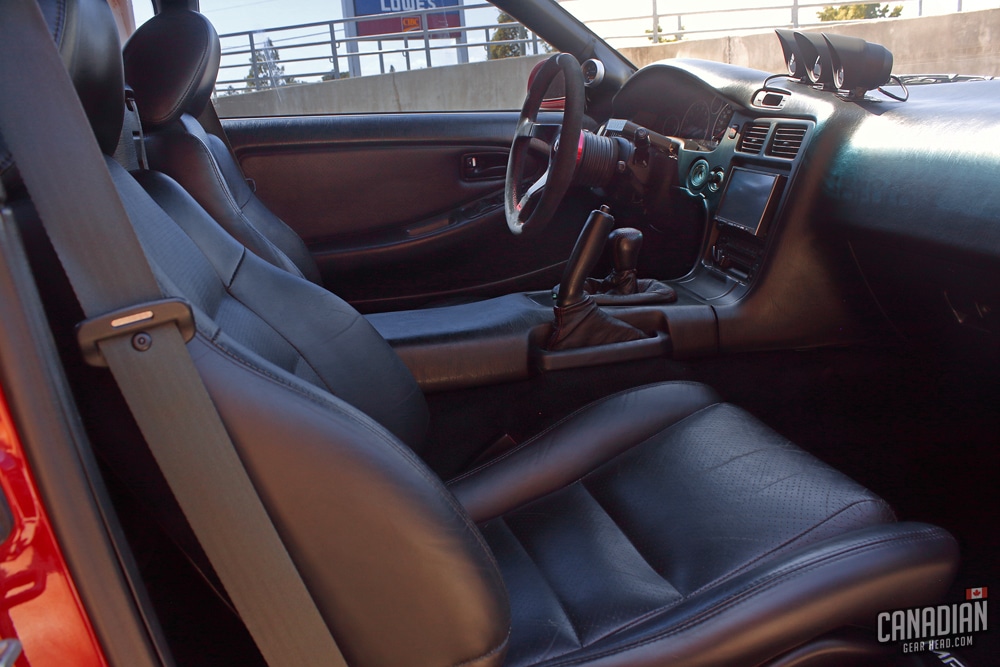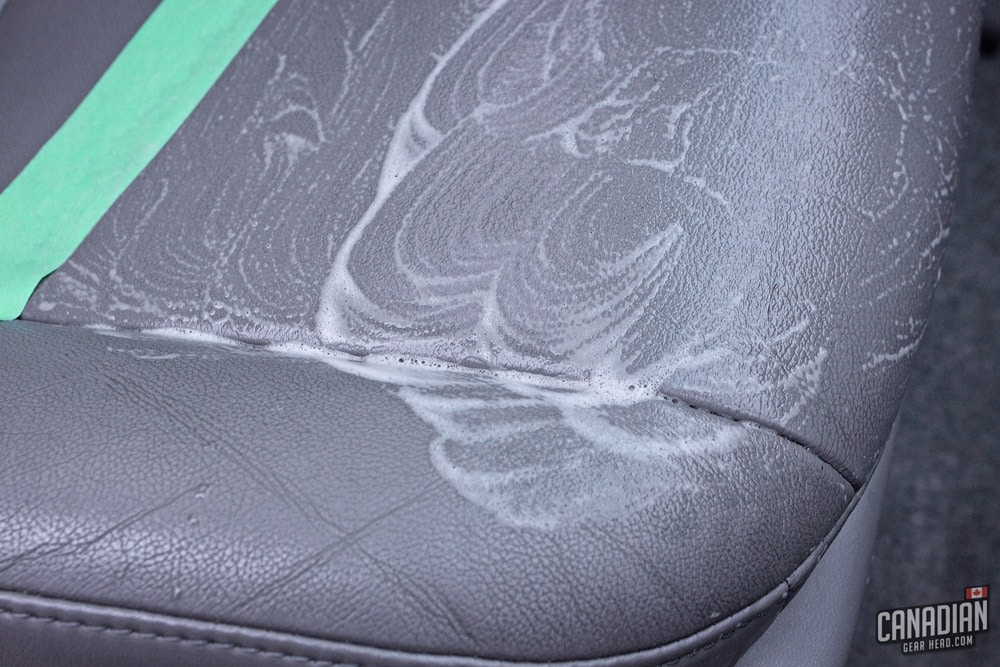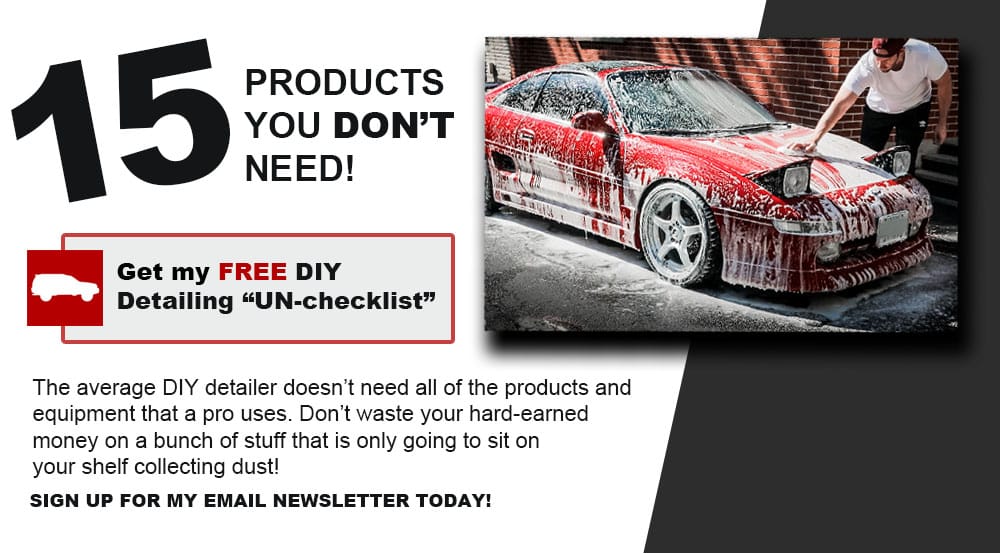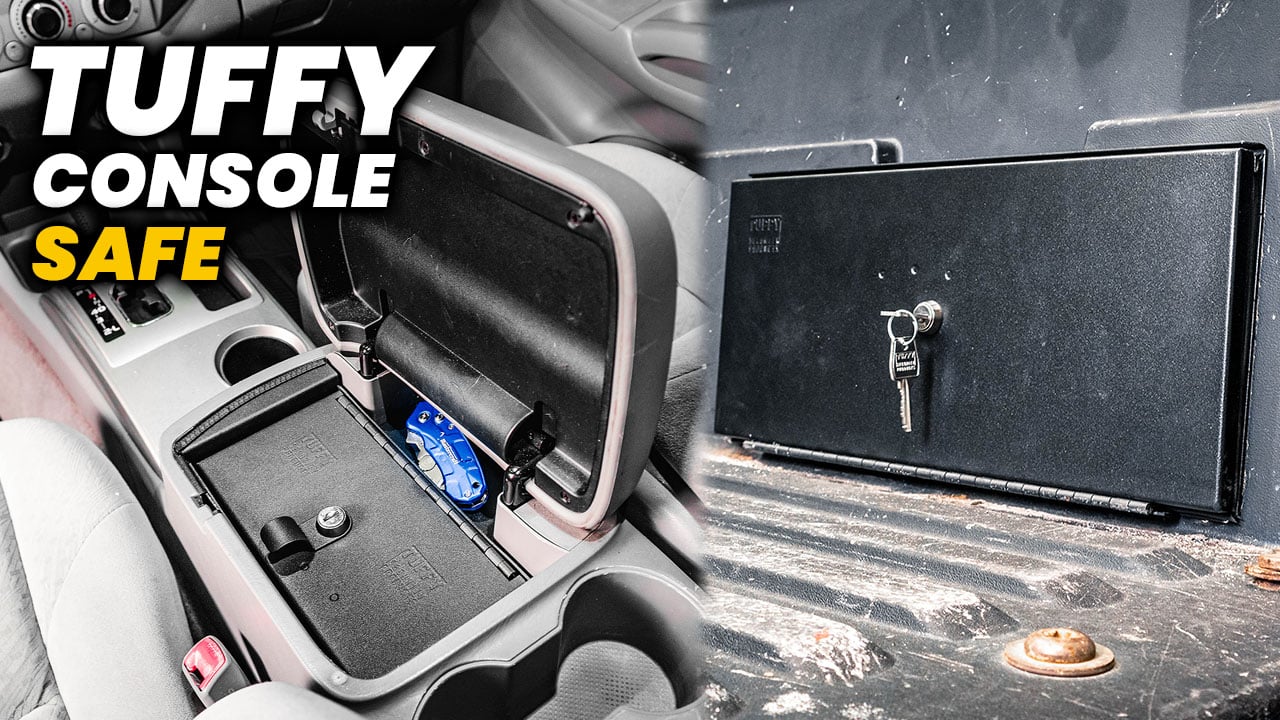I often get asked what the best leather conditioner for your car is. My answer might not be what you’d expect because it isn’t actually a “conditioner” at all!
As a society, we’ve been taught that cheap cars have cloth seats, and expensive ones have leather. We’re also charged a premium for leather when we order a brand new car.
Because of the added expense, our automatic reaction is to try to take the best care of our investment so it doesn’t get damaged. The truth about what you’re sitting on may shock you though:
It isn’t leather.
Let’s give that a second to “sink in” (ironically, your leather conditioner won’t!) Have you ever seen a large chunk of raw natural leather that has zero flaws in it? Me neither.

So how would automakers possibly be able to find enough perfect leather to be able to produce thousands of seats?
Even if they could source it, you’d end up paying A LOT more than $30,000 for a car that was equipped with it. As a result, many manufacturers will use a coated vinyl on their seats rather than actual leather.
You may be thinking you’ve been duped by the automakers, but that might not be the case. If you own a higher end car, the material they used on your seats does indeed start off as natural leather but its texture and color are artificially corrected.
Unfortunately, there’s no such thing as “Red Rock” or “Sakhir Orange” colored cows. These vibrant colors are proof that leather seats are dyed in order to achieve the desired look.

This isn’t a bad thing – it just makes sure our interiors don’t look like, well, a cow. Best of all, the finishing process involves treating the leather with a clear coat.
Yup, that’s right. A clear coat!
Although it’s not exactly the same as your paint’s clear coat, overall it’s very similar. Both coatings are technically a form of plastic.
Much like our paint jobs, we can consider the artificial leather as the “base layer” and the clear coat the “top layer”. No, this doesn’t mean you should break out your buffer and polish your seats. But essentially, we can clean and treat them in a similar manner.
For more on how I care for my own leather seats, check out the video below:
How should you protect your leather seats?
Now that we’ve established that we’re never touching the actual leather, we can adjust how we clean and protect our seats. We can’t feed, nourish, soften, or change the leather in any way – it’s under a protective clear coat!
Those oily conditioners are going to do nothing more than sit on top of the clear coat, causing more harm than good.
Having a greasy layer on top of your seat is going to attract dirt. Dirt is abrasive. And dirt combined with the friction from you sliding in and out of your seat is EXTREMELY abrasive. THAT’S how damage and wear occur on our seats.
Here are the most important tips when caring for your leather seats:
1. Keep them clean.
This is in my opinion, the best way to keep your leather seats in good condition. Not allowing dirt, mud or any other foreign substances to stay on your leather is the best thing you can do. Cleaning them often will also keep stains from becoming permanent. The earlier you catch a stain, the easier it is to remove!
I share all of the products I use to clean and protect my 4runner’s interior in this article:
2. Be careful getting in and out of your car.
We often tend to slide in and out of our vehicles. You might not even notice yourself doing it. Remember how we talked about what the friction from sliding combined with any dirt can do to them?
This is a guaranteed way to end up with cracks, tears, and rips in your leather. Sliding over the side of your seat will also wear down the bolster, meaning over time, you’ll have less and less support. It’s amazing how badly you can damage a seat by doing this.
3. Protect the coating, not the leather.
I know, I just spent this whole article telling you not to put dedicated conditioners on your seats. You should however, use something to protect the clear coat.
Just like your paint, the coating protects against UV rays among other things. But we don’t leave our clear coat bare on our paint, and we shouldn’t on our seats either.
So what do we use? Something that’s clear and won’t stain. There are a few companies that sell specific products to protect your seats’ clear coat. Those are the best. Gtechniq L1 Leather Guard is my personal favorite.
Some high quality interior detailers are safe and will leave behind some protection. The key is to make sure it doesn’t change the appearance of the leather.

The natural finish of your seats should be more of a satin look. If the product you’re using makes them shine, throw it away! Adam’s Interior Detailer is a good option.
Lastly, if you like to think outside the box, you can use spray wax. As long as it’s non-staining, you should be fine. The first rule of detailing applies here though – always, always test in an inconspicuous area first. Meguiar’s Ultimate Quik Wax is one that I’ve used for this with good results.
Without these 3 steps there isn’t a fancy leather conditioner in the world that will save your seats from damage. Remember, keeping them clean and free of abuse is the way to make them last.

How to Clean Leather Seats Properly:
There are plenty of products available that claim to “clean and condition” your leather. I’m not a fan. I would rather split that up into 2 separate steps and be able to do a proper job at each. Those products are usually very weak in terms of cleaning ability.
A dedicated interior cleaner like this one is a great way to go. It allows you to suspend the dirt and grime from the seats in nice, thick suds that you can wipe off with your towel. Pulling the dirt up and off of the leather is the name of the game.
Either of these cleaners will work the best with a horsehair brush. The brush really helps to build up a lather vs wiping the leather with just a towel. For intricate seats or really dirty ones, I’ll use a smaller brush and work in smaller areas at a time.
Here’s a cool trick: If I’m doing a rinseless wash on the exterior of the car and the interior is still fairly clean, I’ll give it a quick wipe down with the bottle of pre rinse solution and a microfiber towel.
It’ll work on all of your vinyl and leather surfaces and leave behind a clean, satin finish. I find this saves me a ton of time if deeper cleaning isn’t necessary.


Tim is the creator of Canadian Gearhead. His experience with auto detailing and working for Toyota shows through all of the articles posted here. He runs the Canadian Gearhead site and YouTube channel full-time now and currently owns a 2007 4runner, 2006 Tacoma, and 1991 MR2. Read more about Tim:





Leave a Reply